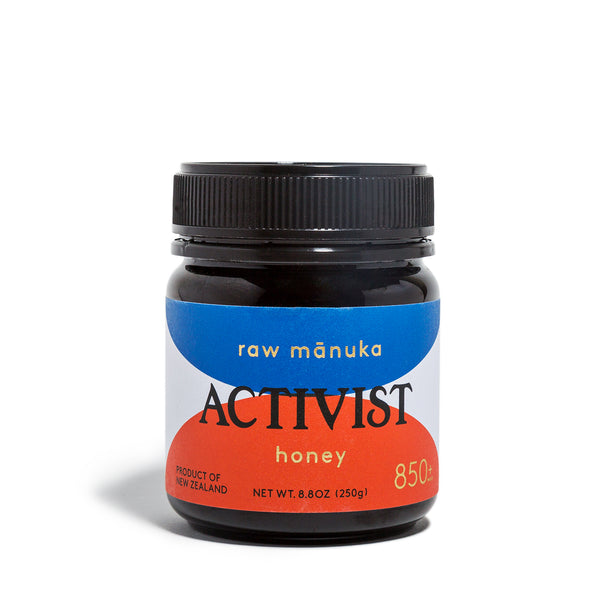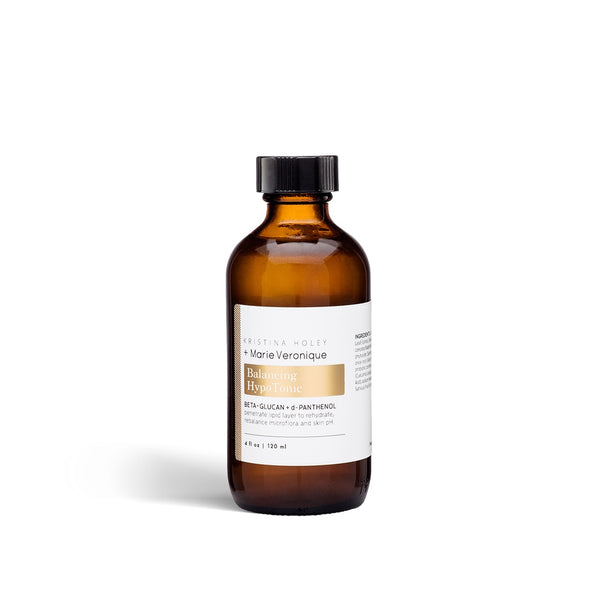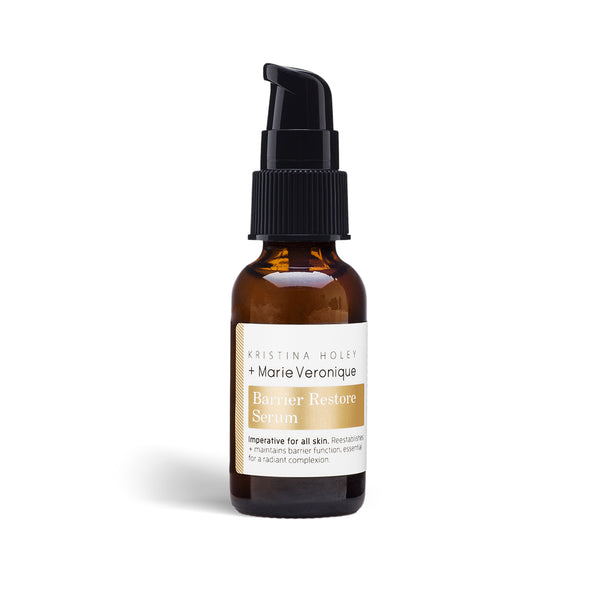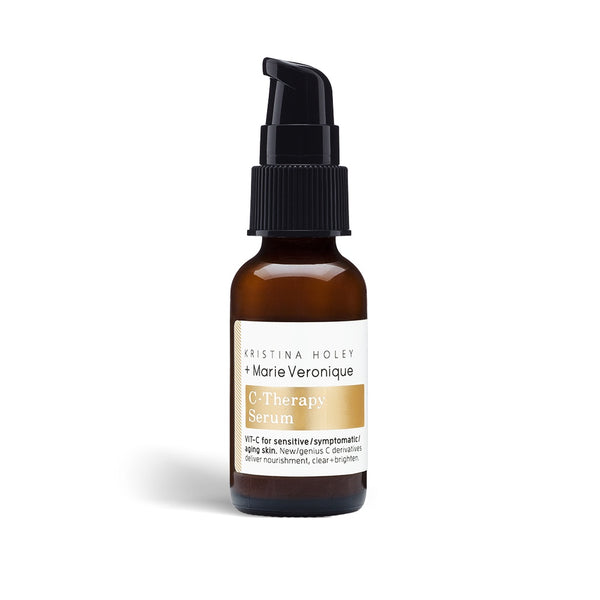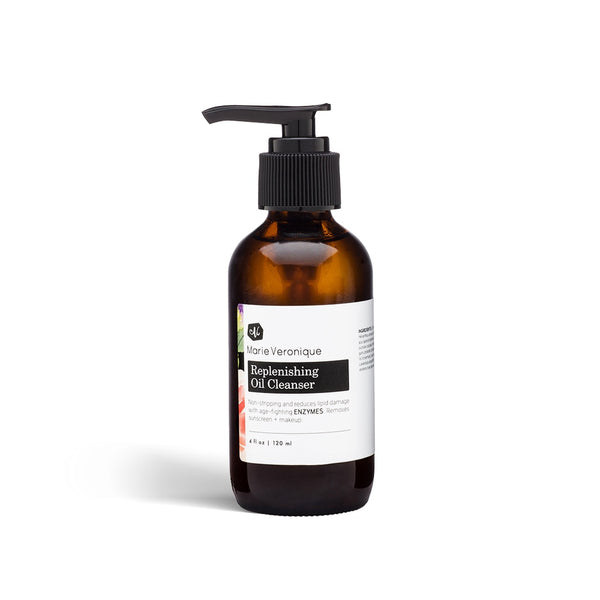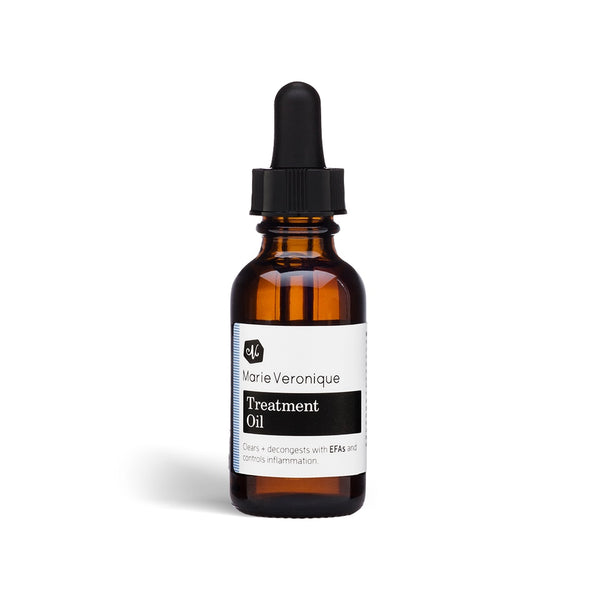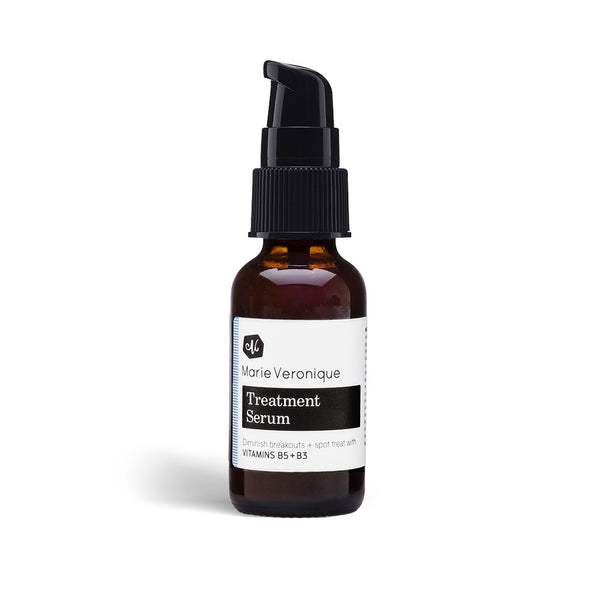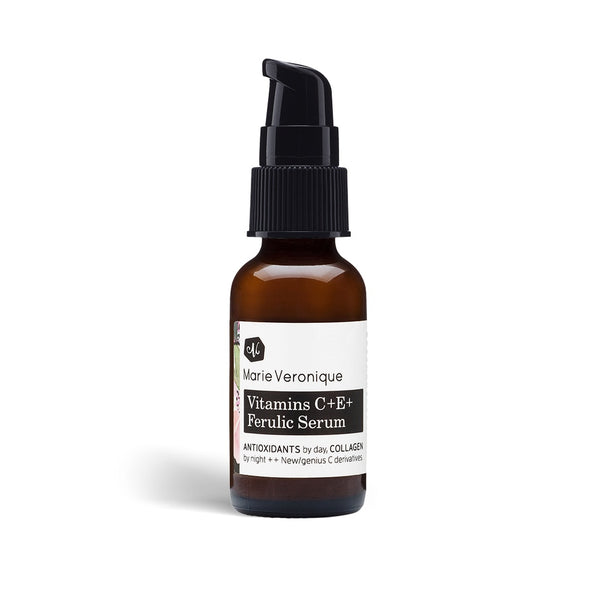Why did you and Marie create the Vitamin C-Therapy?
We created C-Therapy for a few reasons. First and foremost for me was Vitamin C induced skin sensitivity. I was seeing clients who were experiencing allergic type reactions to products containing Vitamin C in the form of ascorbic acid. Many went on to develop sensitivity to Vitamin C to the point where they would get little breakouts when they used Vitamins C E Ferulic or another brand's C serum. We saw topical Vitamin C sensitivity/intolerance as a real concern.
Upon further investigation with the affected clients two interesting patterns emerged. In the first category of people not able to tolerate ascorbic acid were those who had had a history of lots of exfoliation/peels/acids or Rx retinoids in their routine OR symptoms of barrier dysfunction (dermatitis/eczema in particular). This group also had a history of using an ascorbic acid product as part of their regular routine.
The second category consisted of people who had used a powdered vitamin C product. That is, they took an ascorbic acid powder, dissolved it in liquid and applied it directly to their faces.
Our hypothesis with regard to the first category was that consistent compromise of barrier function creates vulnerable skin. Repeated applications of ascorbic acid eventually sensitized skin to it. This is less a true allergy than a learned immune response brought about by excessive use of ingredients/products/
In the second category we found people who had used a product which over time induced sensitization where no sensitivity existed before. Powdered ascorbic acid dissolved in liquid and then applied to the face is a recipe for disaster and ranges from immediate damage via an acid burn to increased sensitization as the protective barrier is compromised time after time with a very acidic product.
Our goal became to find a way sensitive and/or sensitized clients could still get Vitamin C delivered to their skin topically, bearing in mind that most acquired sensitivities will diminish over time. Eventually most people will be able to use, with no reaction, correctly formulated ascorbic acid products.
There were other reasons to pursue the Vitamin C challenge of course. Of all the amazing things it does for the skin my favorite is that it boosts circulation. MV’s favorite (naturally) is that it is needed to hydroxylate proline in skin cells so they can produce collagen. No Vitamin C, no collagen! It is also a fantastic antioxidant.
Second generation Vitamin C derivatives were the obvious choice—they penetrate to the skin cells where they convert to ascorbic acid to perform their magic. They are also stable enough so that they do not degrade and cause harm to the skin’s outer layers by increasing free radical damage; the source of sensitization. We researched and experimented with the new generation of derivatives available, eventually settling on a combination of derivatives that worked at different layers of the skin to perform different tasks.
The eventual product, C-Therapy, was tested on many clients according to my hypothesis that barrier dysfunction could be corrected by using C-Therapy first, followed by Vitamin C + E Ferulic serum when the skin moved away from a state of sensitization. This approach proved so successful we were enthusiastic about releasing the product.
How is it different from the Vitamin C+E+Ferulic serum?
Vitamins C+E+Ferulic Serum is formulated with both stabilized l-ascorbic acid + two C derivatives, magnesium ascorbyl phosphate (MAP) and Tetrahexyldecyl Ascorbate (THD). It also includes additional antioxidants such as Astaxanthin and Lycopene, increasing overall free radical protection for skin that can tolerate l-ascorbic acid. Essential oils have been eliminated to reduce the potential for skin irritation. The total percentage of Vitamin C (l-ascorbic and c-derivatives) is roughly 7%. The l-ascorbic concentration remains the same as the previous version at approximately 5%. Vitamins C+E+Ferulic Serum is best for balanced/stable skin with aging concerns as it provides the ingredients required to produce collagen, it helps to increase UV protection via the antioxidant route, repairs at the cellular level and provides micronutrients needed for healthy skin.
C-Therapy Serum brings the benefits of Vitamin C for all skin types, even those with sensitive, compromised and symptomatic skin. C-Therapy Serum is an essential oil-free serum that utilizes Vitamin C derivatives beneficial for all skin types, especially sensitive, sensitized, congested and breakout-prone skin. Next-generation derivatives are stable yet convert to ascorbic acid to deliver Vitamin C in its active form.
If layering C-therapy with other MV serums, which should come first?
When considering which C serum to use:
For healthy, balanced skin use VITAMINS C+E+FERULIC SERUM during the day for sun protection and at night for collagen production.
For symptomatic skin exhibiting barrier dysfunction/dermatitis use, C-THERAPY SERUM 2x/day, AM/PM.
For symptomatic skin with adult acne use C-THERAPY SERUM during the day for anti-inflammatory and sun protection. Use VITAMINS C+E+FERULIC SERUM at night for collagen production.
For symptomatic skin with hyperpigmentation use, C-THERAPY SERUM 2x/day, AM/PM. May use VITAMINS C+E+FERULIC SERUM at night if collagen/aging is of equal concern.
For symptomatic skin with rosacea use C-THERAPY SERUM 2x/day, AM/PM. May use VITAMINS C+E+FERULIC SERUM at night if collagen/aging is of equal concern.
If you are pairing one of our C serums with another serum it does not matter which one goes first. Our general rule of thumb is to always apply Barrier Restore Serum last so if you are using a C serum with BRS, then apply the C and follow with the BRS.
What about C as an ingestible, do you feel there are positive results to consuming it too?
Of course. Our body loves/uses/requires vitamin C! I know there are a lot of supplements out there that claim to boost collagen production or enhance efficacy of your SPF but actually it’s not that straightforward.
Vitamin C has many roles within the epidermal and dermal layers. It can decrease cellular damage/oxidative stress, speed up the rate of healing and is also involved in the synthesis of collagen (all types), as well as other properties involved in overall epithelial barrier function.
In the internal body, Vitamin C acts as an antioxidant/free radical scavenger. It also supports various functions of the innate/adaptive immune system, and has a positive impact on pathogens/microbiome of the internal and external body. Without vitamin C (or with low levels), our immune system can be impaired, therefore putting us at risk for disease, infection, increased inflammation and slower rates of healing/collagen synthesis.
However, it is important to be aware that when you ingest a vitamin C supplement your body is going to prioritize it. Our bodies do not make Vitamin C, yet it is central to many bodily tasks; it supports efficient digestive function, appropriate immune system response, microbiome integrity and proper circulation among other things. Perhaps it might get around to collagen production if there is still Vitamin C available after accomplishing all its other duties. But it’s at end of the list, which is why supplementing with topicals that target skin tissue is a good idea in the case of C.
It’s best to keep it simple. We know that we will feel better/work better with Vitamin C and chances are you will get it in food daily, so eating lots of fruit and vegetables is best. Eat whole, real sources of Vitamin C and let your body do the rest. When it comes to your skin, apply Vitamin C daily from clean, well formulated sources, because topicals will help supplement all the many other Vitamin C demands that are placed daily upon your body.
If you want to take an oral supplement or have current symptoms which could benefit from an increase of vitamin C, then look for lypospheric as that enhances absorption, and don’t take too much at once, space it out. 1,000 mgs in the morning and again at night is sufficient for most people.
We know that C can be very hard to stabilize, what makes yours different and how do you accomplish that?
We use a lower concentration of Vitamin C in our product, 5%, than many other Vitamin C serums on the market, and recommend using it twice per day as a way to get the maximum benefit from Vitamin C. But, you say, for anti-aging/promoting collagen production studies recommend a topical application of 10% l-ascorbic acid daily! Yes, we answer, but following the logic of spacing out Vitamin C oral supplements to optimize efficiency it makes better sense to space out topical applications with a morning and an evening dose of 5% Vitamin C than to apply 10% all at once. Your body obeys the use it or lose it rule with Vitamin C, internally and with skin, and what it can’t use it discards. An excess of topical C may also contribute to irritation and increased sensitivity, so another plus to lower concentrations is that they allow even sensitive people to use them—at least once a day if not twice. In yet another feature of the twice daily program, recall that Vitamin C is a multi-tasker--your morning dose of Vitamin C gives you added sun protection and helps prevent hyperpigmentation, while your evening dose helps build collagen--during sleep your skin is repairing and rebuilding itself, and it cannot do this without Vitamin C. (No Vitamin C, no collagen! Clearly, MV is not going to let us forget, so repeat after me: No Vitamin C, no collagen! Thank you, MV).
Because l-ascorbic degrades in water and is a highly unstable ingredient, we formulate the l-ascorbic in an anhydrous solution in an effort to ensure the Vitamin C is more stable (and therefore able to deliver to the skin).
Are there ingredients that work in conjunction with C to amplify its benefits?
Vitamin C in its active form as l-ascorbic acid works well with Ferulic Acid and Vitamin E which studies have shown boost the antioxidant power of Vitamin C. CoQ10 and Astaxanthin are also great to add to vitamin C to enhance environmental protection. Also, don't forget about the derivatives- all of those will offer different benefits to improve skin health and work synergistically.

